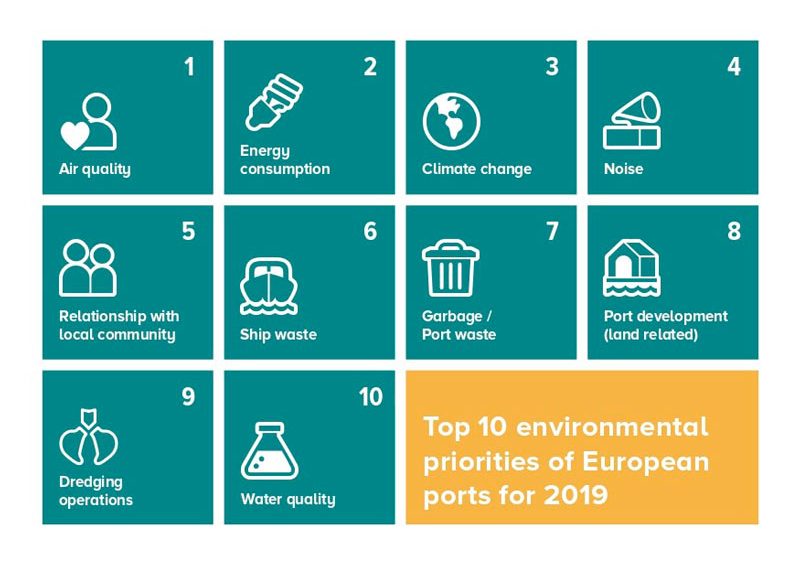Each year the European Sea Ports Organization (ESPO) publishes the European port sector environmental report. A comprehensive “green” treaty with more than 60 key points in terms of ports’ environmental performance, which is condensed in 10 main environmental priorities. We take a look at the most important ones:
Climate change
Climate change has become an absolute priority for ports for obvious reasons. Almost eight out of every ten European ports take climate change into account when developing new infrastructure projects. Furthermore, 62% of ports strengthen climate resilience of their existing infrastructure and 47% of them has already faced operational challenges due to climate change.
Energy consumption
As is to be expected, controlling energy consumption is important. In this regard, more than half of the ports are providing electricity to ships operating at the dock and 48% of them provides high voltage electricity to seagoing ships. One third of them have an LNG supply that is supplied mainly by trucks (90%) and barges (20%).
Relationship with the local community
The relationship with the local community is of utmost importance for ports, even more as the public becomes better informed and more committed. The local community therefore has a great influence on port activity. For this very reason, transparency is vital for ports: 87% of ports communicate their environmental policy to stakeholders and 82% of them publish it on their website.
Waste, water and air quality
Everything related to port waste and emissions is an issue of concern at ports. These are key aspects for the public’s acceptance of the port activity; therefore, air quality is once again the main priority for ports in Europe.
This priority is incentivised with the different environmental rates offered by 56% of ports for boats that surpass regulatory standards in terms of waste and air emissions.
There is also a growing awareness at ports of the environmental benefits of having improved equipment. Better port equipment translates into more fluid port traffic, a lower risk of incidents and spills, and therefore less pollution.
Special attention should be paid to noise pollution. Noise has traditionally been a constant at ports, which can be minimised with the emergency of terminals that are increasingly automated and electrical.
Port development
Finally, a key for making ports ecological is developing them with environmental objectives in mind, using infrastructures that help to reduce energy consumption and that are durable. The best way to do this is to use environmentally certified suppliers, such as Prosertek.
Our berthing aid systems allow incidents and excessive manoeuvres that would result in unnecessary environmental pollution to be reduced. Port cranes and walkways using the latest technology, as well as solid defences, bollards and quick release hooks, are parts of a port puzzle where nothing can fail at the green ports of a future that has already arrived.



Comments are closed.